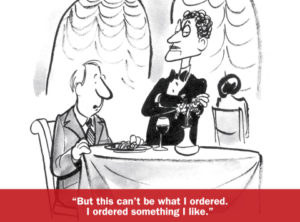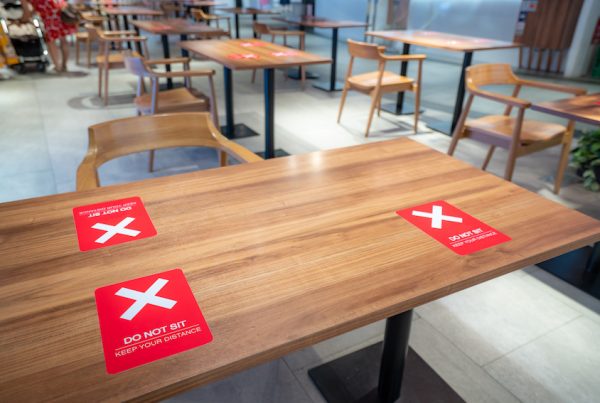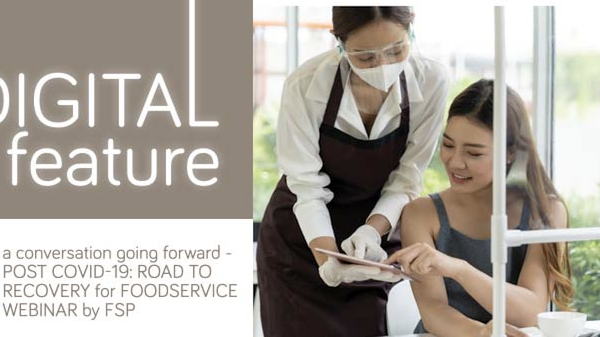In the revenue contribution of a typical restaurant,  the large majority of revenue is normally contributed by a small percentage of repeat customers – which is about 10 percent. This 10 percent of customers is hugely important.
the large majority of revenue is normally contributed by a small percentage of repeat customers – which is about 10 percent. This 10 percent of customers is hugely important.
To leverage the 10 percent of your customers, consistently reframe your existing observation and insights to ensure you have something to act on, and to act on the best available information. Especially when you identify purchasing patterns and browsing behaviour among your customer, they get treated as individuals.

With that in mind, here are 3 key takeaways that will place your restaurant in the right paradigm for a brand new age in the F&B industry.
BRAINSTORMING THE RIGHT SOLUTION
You have noticed a consistent issue in your restaurant. Perhaps, there is a repetition of poor reviews or your customers are not coming back to your restaurant. The next step is to figure out how to adjust what you’re already doing to fix those issues.
Does it mean you need to change or expand your menu? Does it mean you need to provide more training to your employees? Or simply, update the décor and make the ambience more inviting? Consider your problems as an opportunity to step back and observe where your restaurant can improve.
Look Past The Purchase
A survey conducted by Gleanster and Yesmail showed that more than 50 percent of companies on the two platforms possess a good understanding of their customers’ past purchase behaviours. With these information, your restaurant too can create more targeted promotions and marketing campaigns that suit consumers in your qualified demographics.
Reengineering Your Menu
If your data on consumers’ buying behaviour constantly reveals that menu prices are too high, it doesn’t necessarily mean you need to lower your price to make the right choice for your business. Perhaps, all you need to do is manage your platings and portions so that your menus can fit into your price placement.
Famous British retailer Marks & Spencer often used longwinded and extremely sensual descriptions of food in its adverts. The impression of the quality of its products was conveyed successfully and it saw sales rocket by 3,500 percent. Pizza Hut too used a testing eye-tracking technology many years ago to preview what diners want by asking them to scan through 20 different pizza toppings before offering a new combination to their customers.
Acquire more data on your customers’ psychology and use them to analyse your menu item prices, food costs, and contribution margins. This will give you a clear glimpse of profitability and popularity for your menu items, where you can easily identify which items contribute more profit and which items are holding your restaurant back.
Source: The Wall Street Journal
CONNECTING WITH THE RIGHT PEOPLE
Online platforms are great tools not only to reach customers, but also to engage consumer audience at an intimate level. After conducting surveys, getting feedback through reviews, and engaging with customers, most restaurants have come to believe that a social media presence has become more secondary in nature in building relationships with customers.

Word Of Mouth Still Talks
When it comes to online word of mouth, social media and restaurant rating sites can be your best friends or your worst enemies. After all, that’s how people get connected and how they find out about the things that are happening in their area, restaurants, and the specials these restaurants offer.
Darya Restaurant, a Persian restaurant in Santa Ana, CA is one restaurant that has recently developed a new and responsive website much recently to respond to their customers instantaneously and effectively. While everyone is going through the electronics for convenience, customers don’t want to wait until they get to their home or office. Maintaining a positive online presence can be as essential as customer service inside your restaurant.
Connect With “Foodies”
Although still a young strategy for the restaurant business, one of the subtle elements of running a successful restaurant is developing a following with online foodies – blogs, freelance food reviews, and large followings. Beyond these influences are large online foodie communities that share recommendations with one another, enthusiastically and frequently. Because the word of mouth has gone digital, tapping into that can mean big things for your restaurant.
Source: Rewards Network
Understanding your customers is no longer simply a game of numbers whereby “whoever gets the most people win.” Your restaurant needs the surgeon’s precision, not the chainsaw approach of carving a big dent in the forest of consumers.
After all, in this age of customer retention, a restaurant is most successful when its’ loyal customers are identified and given the awareness of how much they were valued. It helps to connect to the right people, stimulate current sales and create more opportunities for repeat business.
ANALYSING CUSTOMER REVIEWS
Public opinion has taken over the Internet, and if you are not currently examining review sites, it’s about time you find out what your customers think.
A recent study shows that that 67 percent of customers think online reviews impact their purchasing decisions. More than half of the people added that online reviews are an absolute factor of their decision-making process. In other words, customers are reading the reviews on your restaurant – both the good and the bad.
To respond to them effectively, the reviews must be tabulated, categorized, and prioritized so that customers can be better understood and provided with the best possible experience. Here’s some ways you can do that:
Look For Patterns In The Comments
If your customer complains that your pasta is too dry but others love it, it could be personal differences in taste. Although you can still apologize for the bad experience, don’t think of changing your recipe because of the oneoff complaint. Now, if you observe several commentators mentioning the same issue- consider it a real-time problem.
However, if a customer particularly makes mention of a rude employee or hygienic violation though it is the only comment you have received, investigate it right away. These are serious concerns that will cause recurring mistakes and hazards in your restaurant.
Respond To Customers
Whether your online reviews are positive or negative, make sure you respond to your customers. Make it prompt, preferably not more than two days after the comment was posted. Apologize over their bad experience, and be specific in your reply. Then, follow through and make those changes.
In special cases, protect your restaurant. Voltaire in Kansas City is one restaurant that so brilliantly responded to a nasty Yelp review in the past and fought back for its brand reputation.
As Adam Bajko, owner of Chip’s Family Restaurants in Connecticut says, “Customer criticism certainly benefits us from making mistakes in the future by critiquing, by teaching, or re-teaching the staff and the management to make sure they’re up to snuff.”
Source: Marketing Land And Review Trackers













